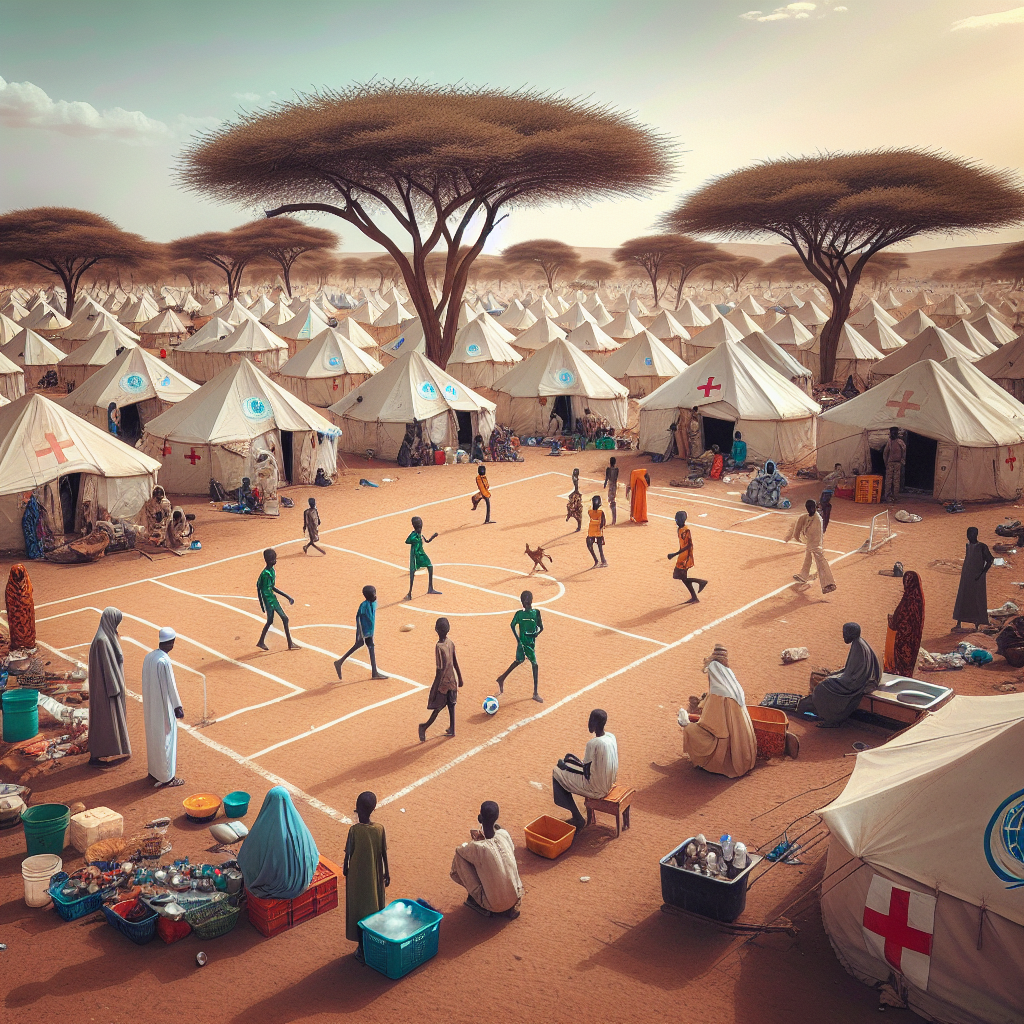Famine and Floods Devastate Sudan's Darfur Camps
Sudan's Darfur region faces a humanitarian crisis as new conflicts and floods worsen conditions in the Zamzam camp. Satellite images reveal contaminated water sources and widespread malnutrition. The Yale Humanitarian Research Lab highlights severe health risks, including cholera. With aid blocked, 500,000 internally displaced people struggle for basic needs.

A famine-stricken camp in Sudan's conflict-torn Darfur region is grappling with a surge in displaced individuals amid floods that threaten water and sanitation facilities, as shown by satellite imagery released on Friday.
Yale Humanitarian Research Lab reports reveal that nine out of 13 water points at the Zamzam camp in North Darfur are inundated, risking cholera outbreaks in an area already burdened by extreme malnutrition.
The camp accommodates around 500,000 people, with the influx prompted by clashes between Sudan's army and the paramilitary Rapid Support Forces (RSF). Brown floodwaters have submerged outdoor toilets and water queues. Resident Duria Abdelrahman expressed a dire need for food, water, and healthcare, having received no aid since arriving.
Zamzam, the largest IDP camp in Sudan and home to some for over two decades, was recently classified as experiencing famine by the global hunger monitor—only the third such assessment in two decades. Nathaniel Raymond, executive director of the Yale Humanitarian Research Lab, described the situation as a worst-case scenario for humanitarian workers.
"A population already vulnerable due to being food and water deprived, on the move and under siege, now is surrounded by floodwaters that are contaminated with human and animal faeces," Raymond said. Zamzam is near al-Fashir, North Darfur's capital, which remains one of the few resistances to the RSF in the region.
This week, at least 65 people were killed, and the main hospital was put out of service by the RSF's attack. Residents in Zamzam and other beleaguered areas, controlled by neutral or government-allied armed groups, have some protection but lack food and services. RSF blockades have halted aid, and residents cannot reach farms or markets.
The Abu Shouk and al-Salam camps near al-Fashir likely face similar conditions. Yahia Ali, a Zamzam resident, highlighted the unsafe water conditions: "The water is unsafe because it mixes with all the dirt," he told Reuters, showing brown rainwater collected in a tarp. Despite its condition, residents are forced to drink it.
Yale researchers documented enough standing water at the camp to cover over 125 soccer pitches, with submerged toilets observed at schools. Refugees from al-Fashir sheltering in a roofless school had water up to their knees.
Flooding in al-Fashir has also affected hospitals, food distribution sites, and markets, including the Mawashi Market, a contamination risk. As of July, Sudan had 11,000 cholera cases nationwide. Waterborne disease outbreaks have been an issue since the 2003 conflict, with Zamzam being one of 14 Sudanese locations where famine is likely amid restricted aid.
Adam Rojal, spokesperson for the Displacement Camps Coordinating Committee, stated, "This is not just the situation in Zamzam, but the condition of all the other camps in Darfur, more than 171 camps suffering the same conditions."
(With inputs from agencies.)










